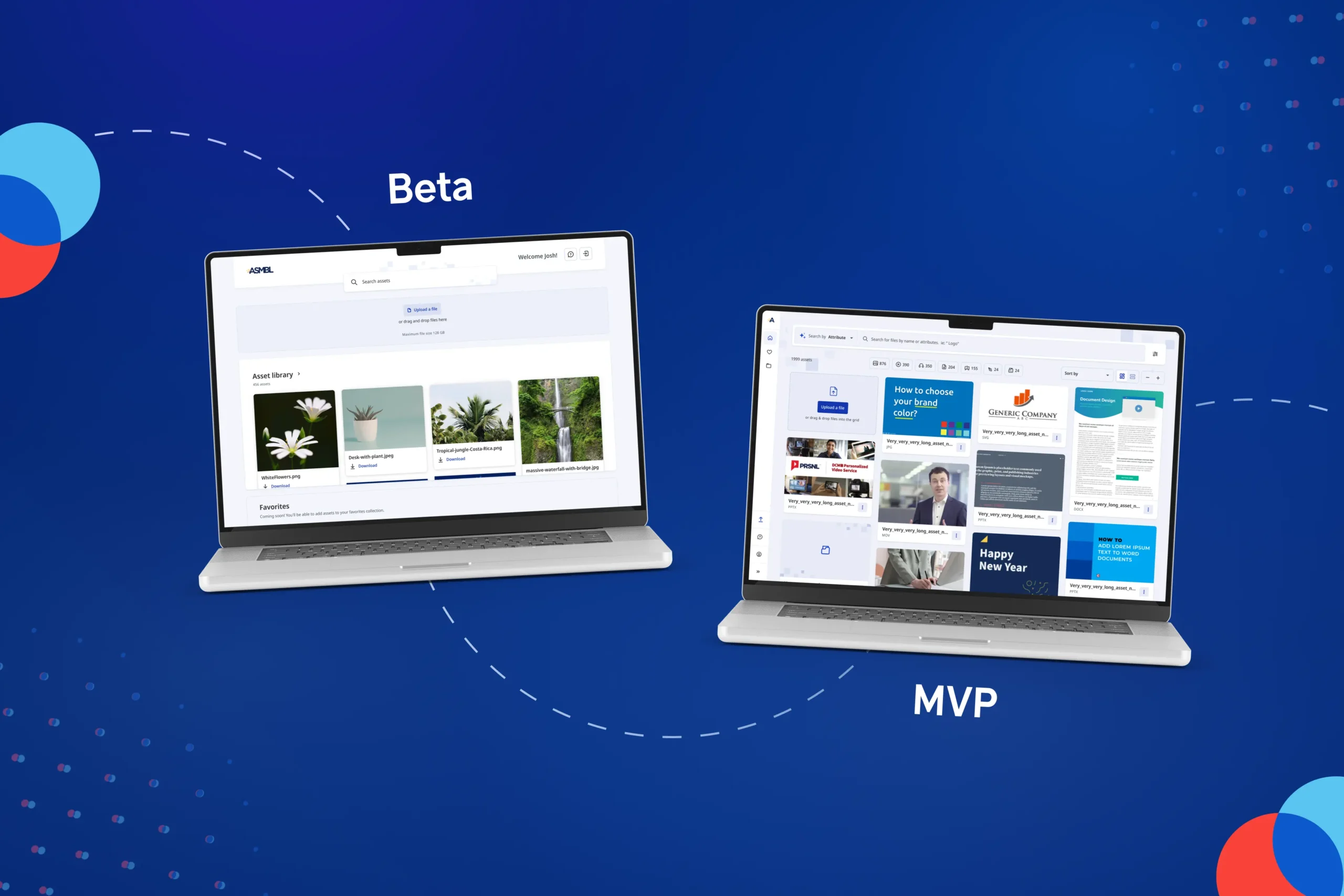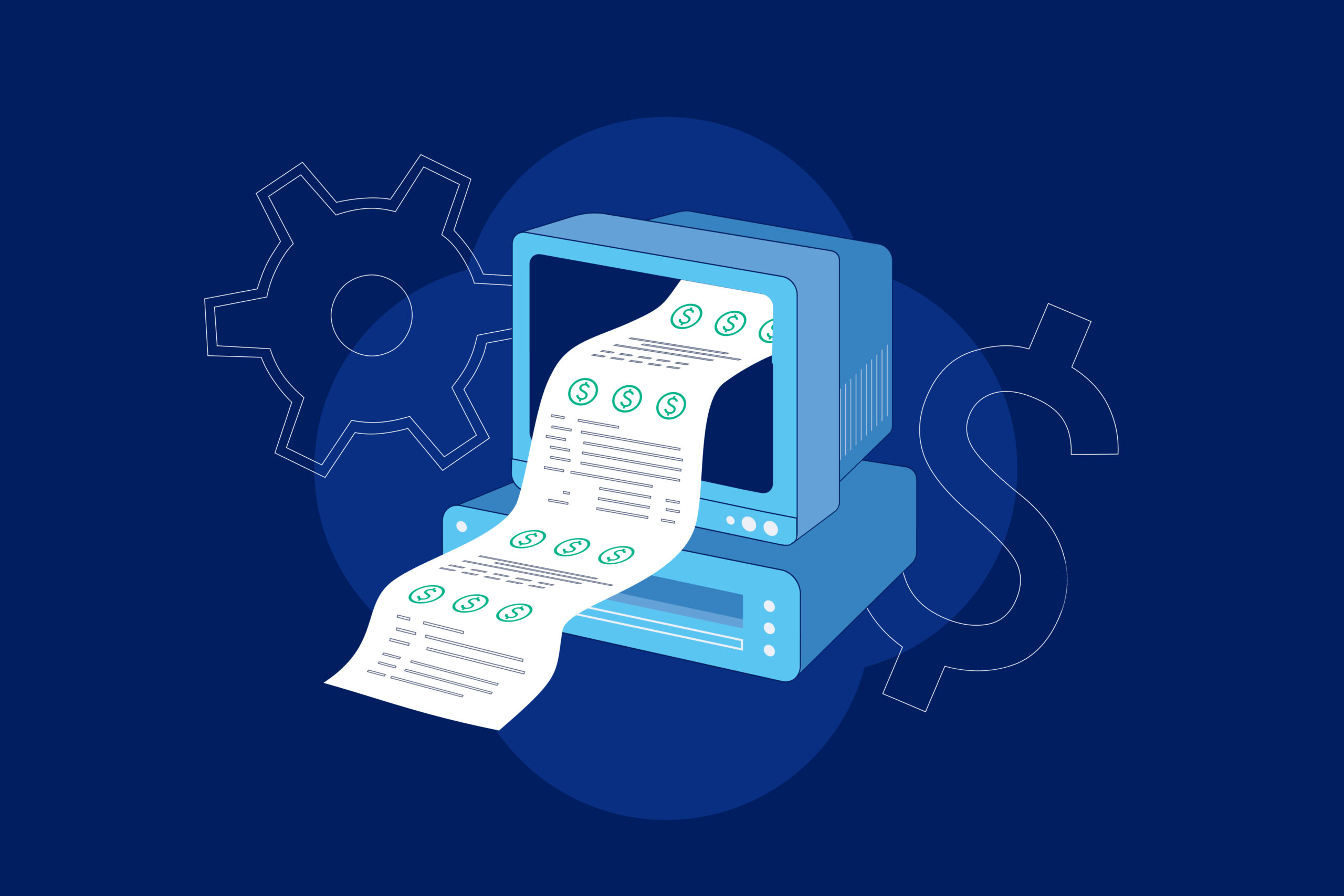Alexia Teissier is a UX & UI designer at nventive, and she’s been involved in the design of DCM’s DAM (Digital Asset Management) system from day one. With her extensive experience in product design, she shares in this article the competitive advantage of developing a Beta version before delivering the MVP (Minimum Viable Product).
A Flexible Strategy
When facing a large-scale project, we believe that a flexible, step-by-step strategy is the best approach.
Before launching an MVP for DCM, we developed an initial test version to quickly validate the project’s direction. This version, often referred to as a “Beta”, allows us to test concepts and gather initial feedback before making a significant investment. This helped us fine-tune the product vision early on, reducing the risks of costly missteps. This method is a proven way to kick off a project while taking measured risks.
Breaking down your product into smaller, manageable steps helps confirm objectives, adjust decisions, and control investment. This preliminary phase also tests initial assumptions, both technological and strategic, without fully committing to a rigid roadmap. It also allows you to adapt to constantly evolving technical challenges.
In DCM’s case, having a flexible strategy helped quickly validate several key concepts, enabling us to gradually build the product’s success and establish a solid foundation for all future iterations.

We started with a Beta to validate the product’s core features, which then led to an MVP where we refined the Beta version, ultimately creating a commercial version. Of course, the product will continue to evolve according to a well-defined roadmap, adjusted as needed.
Testing the Market
One of the benefits of a Beta is that you can start building your marketing strategy earlier: create a name, generate interest, convince your organization or investors… This phase allows you to collect real-time user feedback, enabling quick adjustments to both product and marketing strategy. The term Beta signals from the start that the product is not fully finished and may contain bugs. This reduces pressure and leads to faster feedback.
This strategy is used annually by Apple when they launch new versions of their operating system (OS). Some users are exposed to the Beta version of the upcoming OS four to five months before its official release.
Creating a dialogue around your product paves the way for discussions with future customers while also fostering internal communication, which is crucial for securing investment in the project.
Even with a small version of our future product that people can interact with, we begin to quietly build credibility.
Validating the Expected User Experience
One of the advantages of starting small with a Beta version is the ability to quickly test it with users. This is part of the strategy to get realistic feedback based on measurable actions.
During this phase, we collected valuable data that allowed us to identify real user needs while helping users gradually familiarize themselves with the product. By addressing user needs, we ensure the creation of a product that they will remember and continue using. Without a huge financial investment, we solidify our learnings.

Striking While the Iron Is Hot
Once the Beta is up and running and the client has secured the necessary internal or financial support, it’s time to accelerate the process and move forward with the product’s development.
In short, our approach with DCM involved establishing a flexible strategy by creating a Beta to gather feedback from users and stakeholders. This allowed them to jumpstart their marketing strategy while controlling investments and adjusting course as needed.
Launching a Beta before an MVP not only leads to a more comprehensive and secure launch but also quickly validates assumptions, refines strategy, and engages users while strengthening alignment between internal and external teams. For DCM, this approach solidified the foundation of the project while ensuring the final product met market expectations.
If your project shares similar characteristics, why not consider scaling it down and adopting a Beta approach? It’s a proven way to speed up production while managing the expectations of a perfect product from the get-go. The complexity of the product, large-scale validation, use of new technologies, importance of user experience, risk of unknown bugs, or market uncertainty are all factors to consider to guide your approach.
Featured articles
Technical or financial, debt becomes expensive when left to accumulate. But when managed properly, technical debt can become a driver of efficiency. Through regular maintenance,…






